- Undergraduate
Bachelor's Degrees
Bachelor of ArtsBachelor of EngineeringPartner School Dual-DegreeUndergraduate AdmissionsUndergraduate Experience
- Graduate
Doctoral Degrees
Doctor of PhilosophyPhD Innovation ProgramDoctor of Medicine-PhDGraduate AdmissionsGraduate Experience
- Research
- Entrepreneurship
- Community
- About
-
Video: Early History
Dartmouth College Professor of History Jere Daniell ’55 gives an early history of Thayer School of Engineering at Dartmouth, from 1867 through World War II.
History of Thayer School of Engineering at Dartmouth
1867–1900
1867
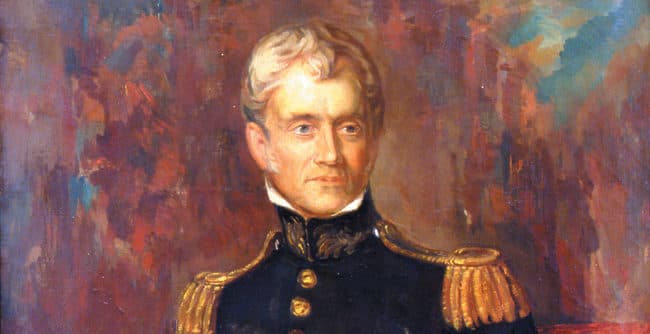
Colonel and Brevet General Sylvanus Thayer, valedictorian of the Dartmouth Class of 1807, initiates the establishment of an engineering school at his alma mater. The 81-year-old draws on his Dartmouth education, his experience developing an engineering curriculum as superintendent of the United States Military Academy at West Point (1817–1833), and his career in the U.S. Army Corps of Engineers to create a civil engineering curriculum for students with a firm grounding in the liberal arts. He provides gifts totaling $70,000 and donates a library of books, manuscripts, and plates about engineering in Europe and the United States.
1870
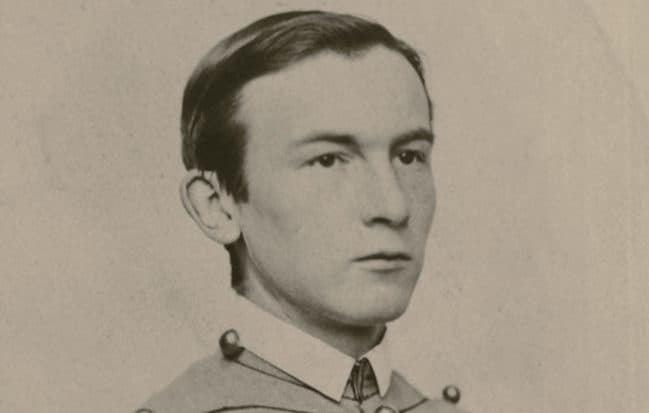
After a three-year search, 23-year-old Lieutenant Robert Fletcher is appointed the first dean and professor of Thayer School of Civil Engineering.
1871
Thayer School opens with three students and five small rooms in Wentworth, Reed, and Thornton Halls. Dean Fletcher, the only full-time faculty member, teaches 14 engineering courses during the first academic year and 36 the following year.
1872
Sylvanus Thayer dies, leaving a legacy as founder of Thayer School, "Father of West Point," and initiator of engineering education in the United States.
1873
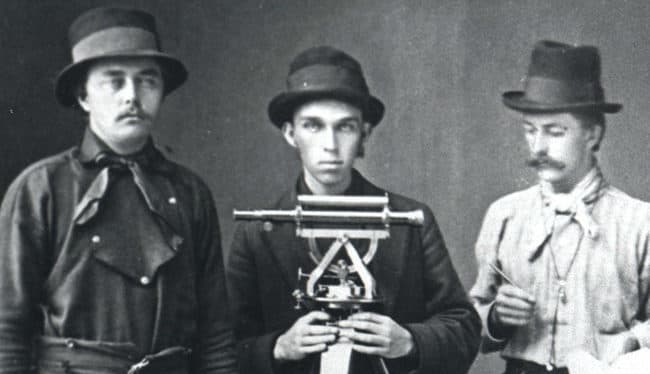
Thayer graduates its first three students.
1879
Dean Fletcher introduces a curriculum that forms the mainstay through 1918. The 12 courses: Surveying; Mechanics; Resistance of Materials; Properties of Construction Materials; Materials and Structural Elements; Bridges and Roofs; Hydraulic Works; Heat and Heat-Engines; Sanitary Engineering; Rivers and Harbors; Rockwork, Tunneling, and Mining; and Masonry and Foundations.
1891
Thayer School's first capital campaign seeks $50,000 for the endowment to cover the cost of books and instruments, visiting lecturers, class tours, and a salary increase for the school’s second professor, Hiram Hitchcock.
1892
Thayer buys and moves into a building on Park Street.
1893
Dartmouth undergraduates are allowed to take courses at Thayer during senior year and graduate with an engineering degree after the fifth year.
1896
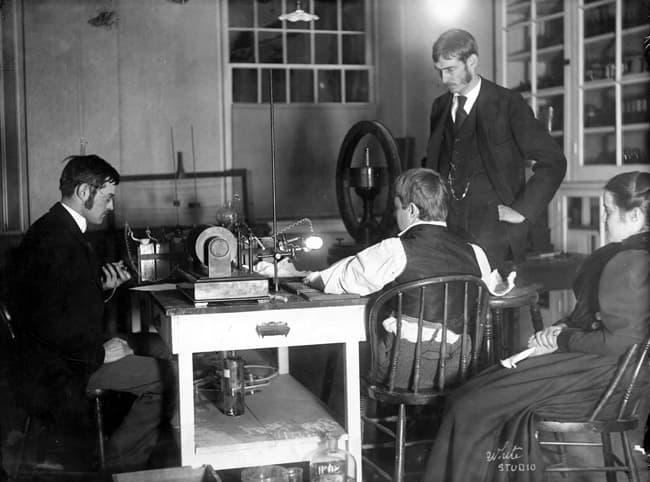
Using equipment he built, Professor Frank Austin, Class of 1895, helps Hanover physician Dr. Gilman Frost take the world's first diagnostic X-ray.
1900-1950
1902
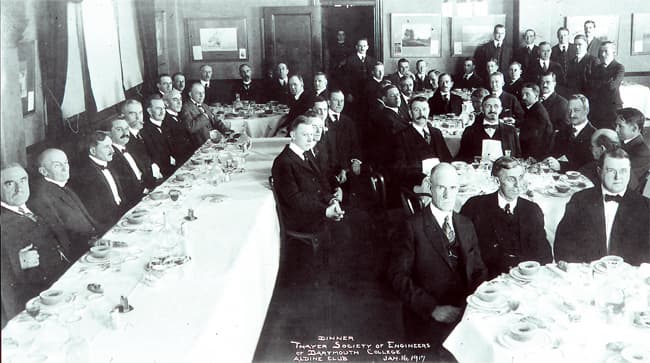
The Thayer Society of Engineers (now Dartmouth Society of Engineers) forms "to further the interests of the Thayer School of Civil Engineering."
1912
Thayer School moves into Bissell Hall, next door to the Hanover Inn.
1918
Dean Fletcher retires from the deanship after 47 years but teaches for another 18 years.
1922
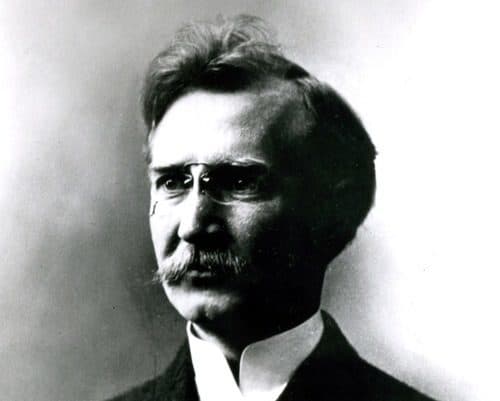
Dean Charles Holden arranges for Thayer students to take business courses at the Amos Tuck School of Administration and Finance.
1925

Professor Raymond Marsden, Class of 1909, becomes dean. He modifies the academic calendar and rearranges first-year courses to strengthen the school’s relationship with Dartmouth.
1933
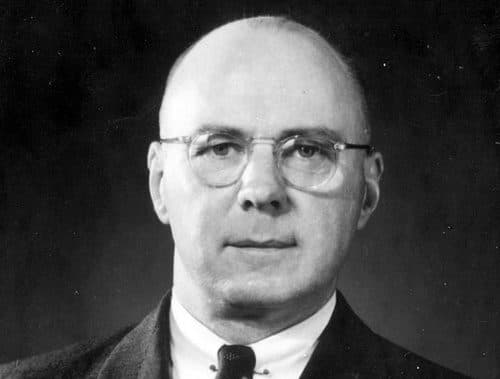
Professor Frank Garran becomes dean. "Engineering is alive and real. We should make it that way in our teaching," he tells the faculty.
1936
Dean Fletcher dies at age 88 and is buried in the Dartmouth cemetery.
1939
Cummings Memorial Hall opens. Named in memory of Horace Cummings, Dartmouth class of 1862, husband of donor Jeannette Cummings, it is the first facility built specifically for Thayer School.
1940
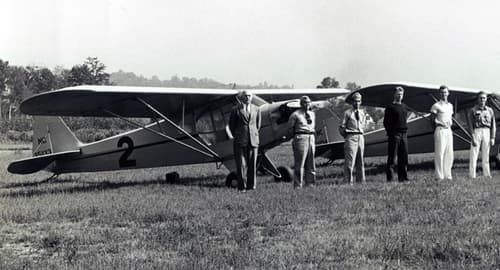
Thayer offers a civilian pilot training program as World War II widens.
1941
The school drops "Civil" from its name and officially becomes Thayer School of Engineering. Thayer School adds electrical and mechanical engineering courses. Professors teach surveying, engineering drawing, and mathematics to regional government and defense industry workers at Hanover and Lebanon high schools. Professor Millett Morgan’s radiophysics study of the upper ionosphere and magnetosphere forms Thayer School’s first large-scale research program.
1942
The Tuck-Thayer program—three years of liberal arts at Dartmouth topped with two years of engineering and business—launches.
1943
Operating the Navy’s largest V-12 College Training Program, Thayer School shifts to year-round operation and accelerated engineering degrees. With reveille at 6 a.m. and taps at 10 p.m., Thayer School operates like a naval base for the rest of the war. Specialized V-12 courses include naval organization, law, history, and strategy.
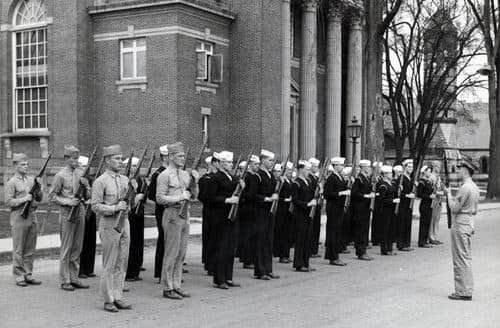
1945
Dean Garran dies. The Thayer School Register praises him for reshaping the school "for the greatest service to the Country, the Profession and the College."
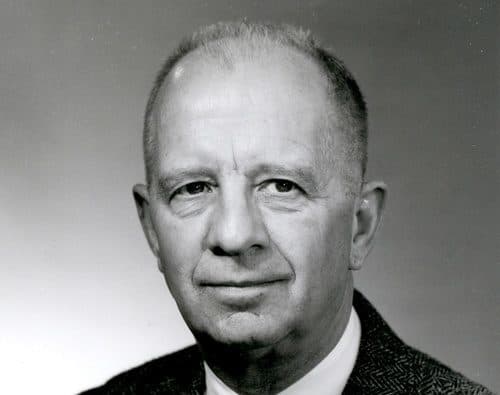
Professor William Kimball '29 becomes dean. He expands the faculty, research, and facilities, oversees growth of the student body, and places curricular emphasis on mathematical analysis.
1947
Two wings are added to Cummings Hall.
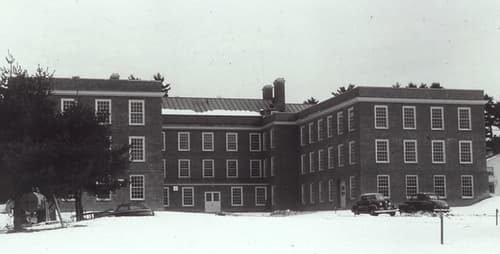
1950-2000
1957
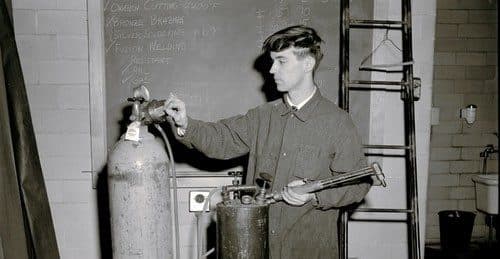
Professors James Browning (pictured) and Merle Thorpe '53 found Thermal Dynamics Corp. to market plasma-cutting technologies they developed at Thayer. It is Thayer School’s first startup.
1958
ES 21: Introduction to Engineering debuts to give students a theoretical foundation at the beginning of their engineering studies.
1960
Dartmouth’s Trustees authorize Thayer School to increase research and grant doctoral degrees.
1961
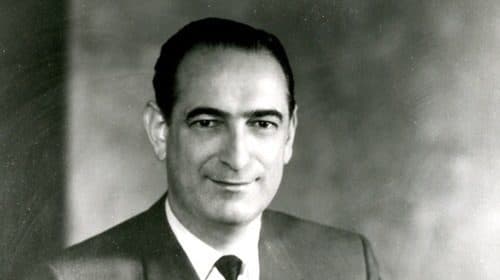
Myron Tribus becomes dean. He expands the faculty, research, and partnerships with industry. Stating that "Knowledge without know-how is sterile," he leads the faculty in developing a new curriculum based on engineering design and entrepreneurship. Dean Tribus, Professor Russell Stearns, and Professor Robert Dean revamp ES 21: Introduction to Engineering into a hands-on project-based experience. The first challenge for students: develop a bicycle that stores energy on the downhill for use going uphill.
1962
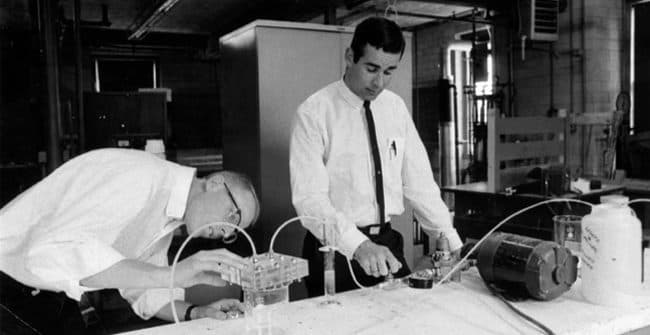
Chris Miller '66 Th'67 '68 and Dean Spatz '66 Th'67 '68 (pictured left to right) are among the ES 21: Introduction to Engineering students who solve the challenge of making brackish water potable. The experience leads each to found reverse-osmosis companies. Professor George Colligan joins the faculty and launches materials science research and courses.
1964
Thayer graduates its first PhD student, Michael Turner.
1965
Thayer graduates its first Doctor of Engineering (DE) students, Thomas Black and Andrew Porteous.
1966
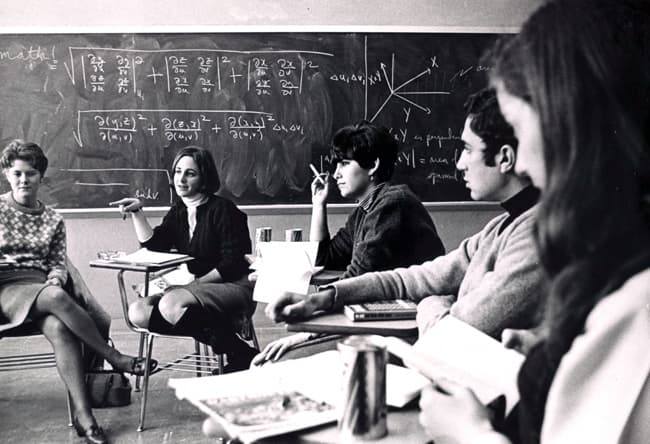
Women are allowed to take graduate courses at Thayer, although Dartmouth is not yet coeducational.
1970
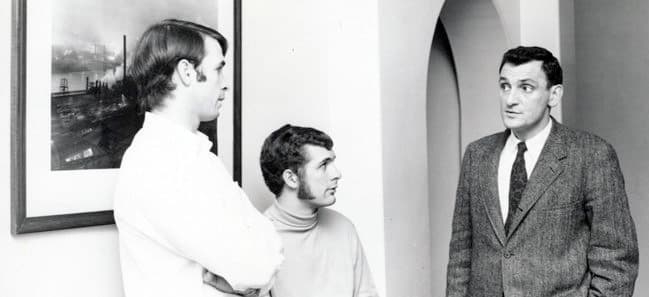
David Ragone becomes dean. He continues the trajectory Dean Tribus set.
1971
Professor John Strohbehn launches Thayer's biomedical research program.
1972
Carl Long becomes dean. He strengthens ties with industry, expands research collaborations with Dartmouth Medical School and the US Army Cold Regions Research and Engineering Laboratory, and launches the Partner School Dual-Degree Program by bringing in female undergraduates from other colleges.
1973
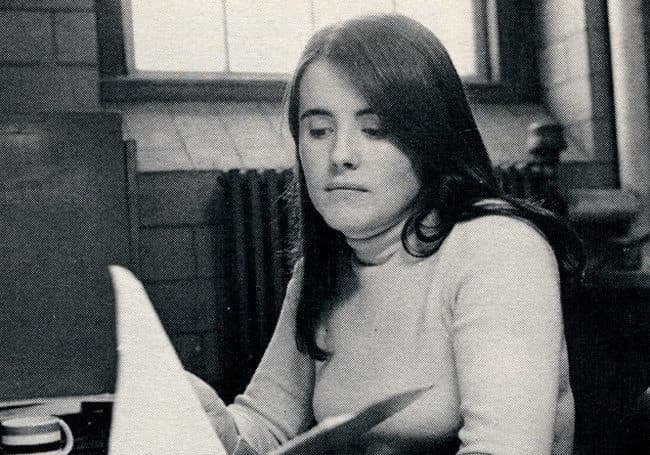
Visnja Gembicki GRAD'73 Th'73 (pictured) and Susan Liu Yang Th'73 become the first women to earn MS degrees at Thayer.
1975
The Robert Fletcher Award is established to honor graduates or friends of Thayer School for distinguished service.
Visiting Assistant Professor Nancy U. Crocker becomes the first woman on the Thayer faculty roster.
1976
The Board of Overseers creates the Dean's Fund, later renamed the Thayer School Annual Fund, to provide financial support for the school.
1978
INVENTE, later renamed Cook Engineering Design Center, is established to promote industry-sponsored research.
1979
Thayer and Dartmouth Medical School offer an MD/PhD program in biomedical engineering.
1981
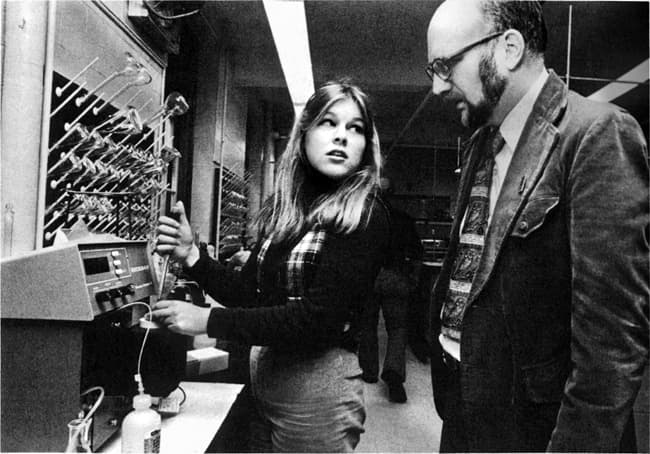
Diane Knappert Clark '77 Th'78 '81 becomes the first woman to earn a Thayer Doctor of Engineering (DE) degree.
Professor Ann Marks Kratzer becomes the first woman to join the Dartmouth engineering core faculty.
1982
Professor Horst Richter establishes a foreign study program with Germany's University of Aachen. From 1982 to the program’s end in 2005, some 70 students from Aachen complete the BE program.

Professor John Collier '72 Th'73 '75 '77 and Michael Mayor, MD (pictured) found the Dartmouth Biomedical Engineering Center's Implant Retrieval Laboratory to collect, analyze, and improve artificial knees, hips, and other orthopedic devices.
1984
Professor John Collier '72 Th'73 '75 '77 begins teaching ENGS 21: Introduction to Engineering. He adds entrepreneurial elements to the course.
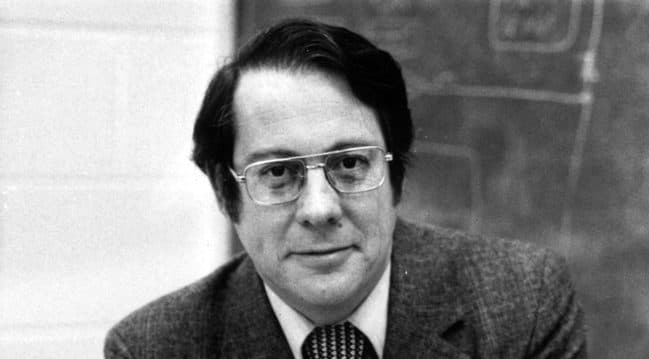
Charles "Hutch" Hutchinson ’68A (pictured) becomes dean.
1987
Thayer's first product design course, taught by Professors John Collier '72 Th'73 '75 '77 and Peter Robbie '69, attracts studio-art majors and engineers.
Cummings Hall expands, adding the Great Hall and doubling Thayer's size.
1988
Thayer creates a program combining engineering and management courses for an ME degree. The program is led by Tuck Professor Kenneth Baker (pictured).
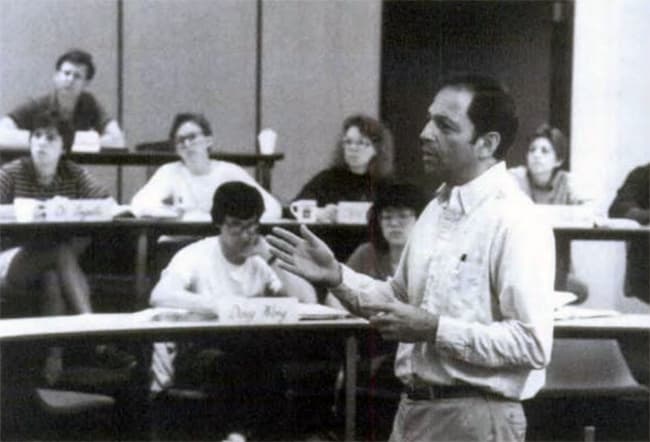
Students race a solar-powered car, SunVox, in the Tour de Sol, a six-day race through the Swiss Alps.
1990
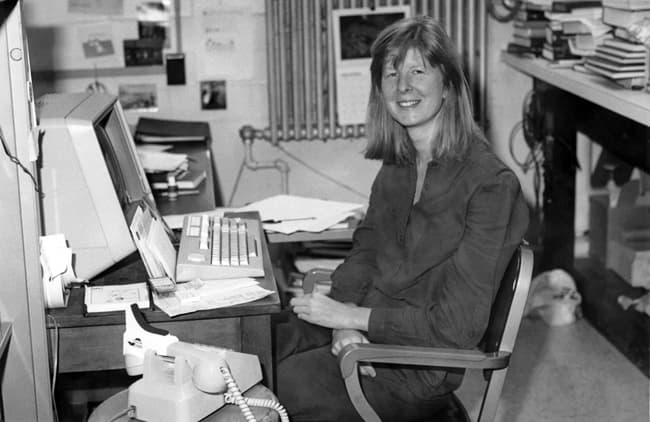
Joyce Mechling Nagle Th’90 becomes the first woman to earn a PhD at Thayer.
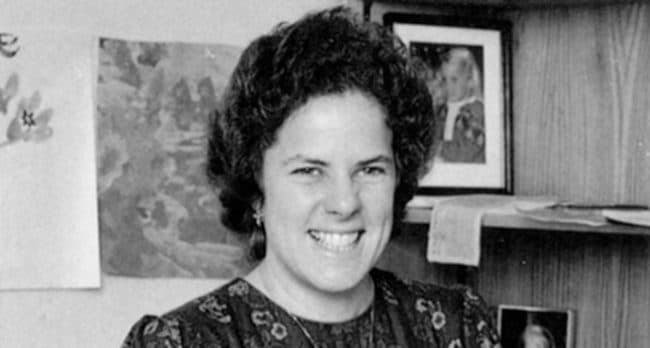
Thayer Associate Dean Carol Muller '77 cofounds Dartmouth's Women in Science Project (WISP) to encourage female students to pursue science, math, and engineering. The project includes placing first-year students into research internships.
1995

Elsa Garmire (pictured) becomes Thayer’s first female dean. She advocates for research centers of excellence and a building expansion.
Students found Dartmouth Formula Racing to compete in Formula Society of Automotive Engineers (SAE) races.
1997
The engineering management ME degree is renamed the master of engineering management (MEM) degree.
1998
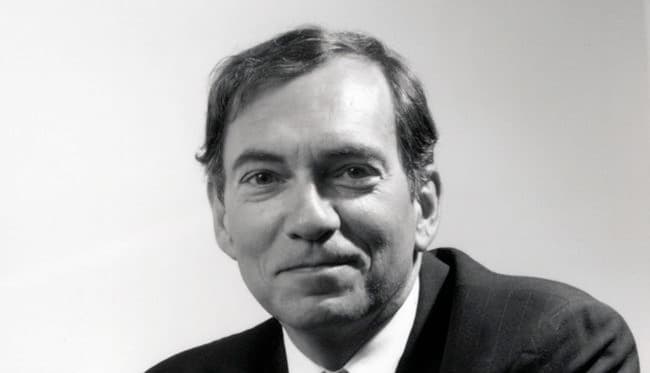
Lewis Duncan becomes dean. He oversees the expansion of research and plans for an additional building.
2000-Present
2001
Professor Horst Richter establishes a foreign exchange program with Helmut Schmidt University in Hamburg, Germany.
2003
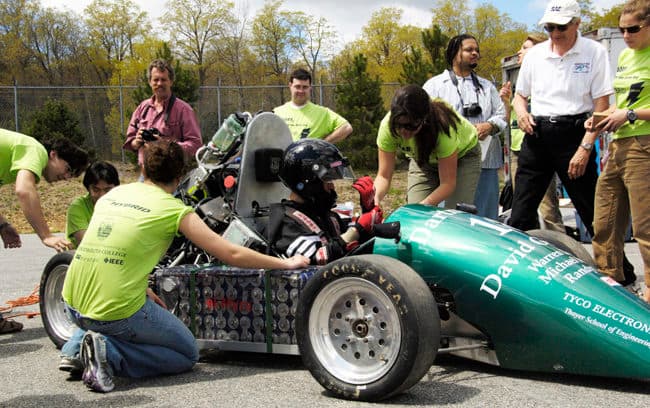
Students build a hybrid racecar and exhibit it at the annual Formula SAE competition.
2004
The Corporate Collaboration Council is founded to mentor MEM students and advise MEM faculty.

Thayer students found a Dartmouth chapter of Engineers Without Borders, which later becomes Humanitarian Engineering Leadership Projects (HELP), which in turn becomes Dartmouth Humanitarian Engineering in 2010. Students work on clean-water, pico-hydropower, sanitation, and cook-stove projects in Africa.
2005
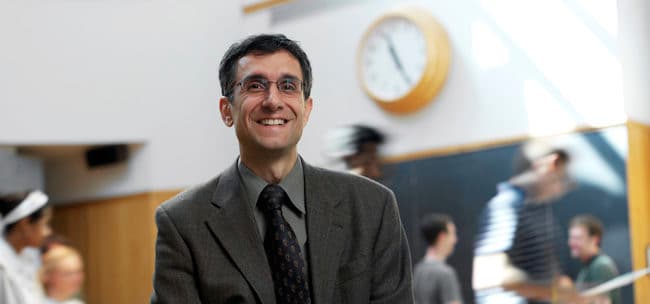
Joseph J. Helble, a chemical and environmental engineer whose research focused on air pollution and nanotechnology, becomes dean.
2006
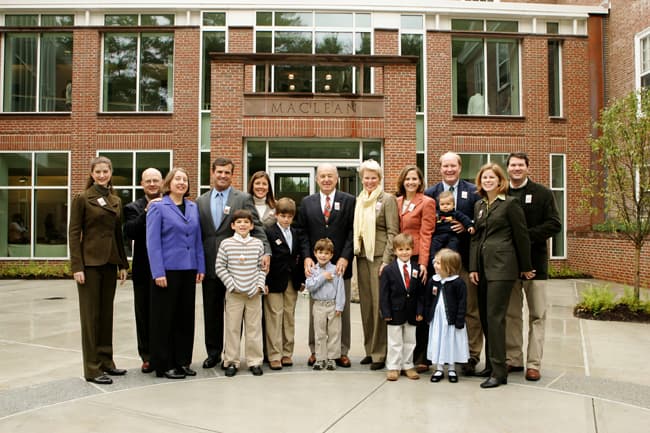
MacLean Engineering Sciences Center opens, doubling Thayer's facilities and featuring student project labs. The building is named for lead donors Barry '60 Th'61 and Mary Ann MacLean (pictured with family).
GlycoFi, a biotech startup founded by Professor Tillman Gerngross and Dean Emeritus Charles Hutchinson '68A, is sold to Merck for $400 million.
Thayer organizes and hosts the first Formula Hybrid International Competition, under the direction of research engineer Douglas Fraser.
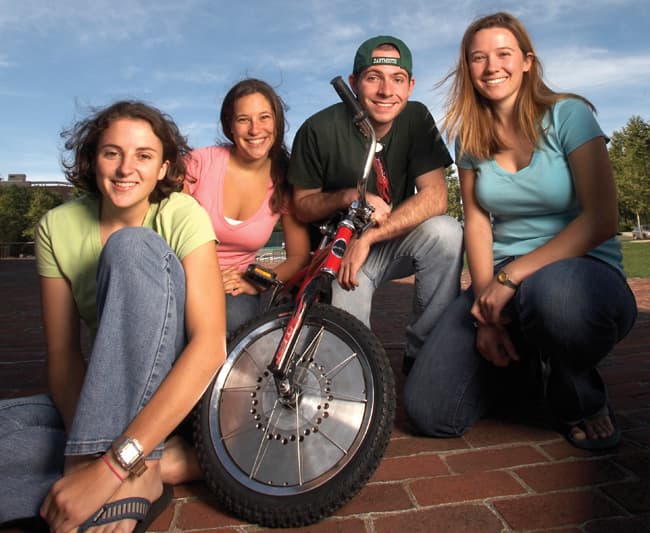
The GryroBike, a stabilizing bike for beginners, wins a Breakthrough Award from Popular Mechanics. Hannah Murnen '06 Th'07, Augusta Niles '07, Nathan Sigworth '07, and Deborah Sperling '06 Th'07 invented it as their ENGS 21 project.
2007
The faculty select three categories of societal need—Engineering in Medicine, Energy, and Complex Systems—as research focus areas.
2008
Thayer establishes the nation's first PhD Innovation Program to provide entrepreneurial training to doctoral candidates.
Professor Francis Kennedy organizes an undergraduate exchange program with Chulalongkorn University in Bangkok, Thailand.
2009

Lindsay Holiday '07 Th'09, Dana Leland '09, and Philip Wagner '09 (pictured left to right) invent an arsenic removal system for use in rural Nepal, where naturally occurring arsenic is a major groundwater contaminant. The project, created for Thayer's capstone design sequence, wins the National Inventors Hall of Fame's Collegiate Inventors Competition.
2011
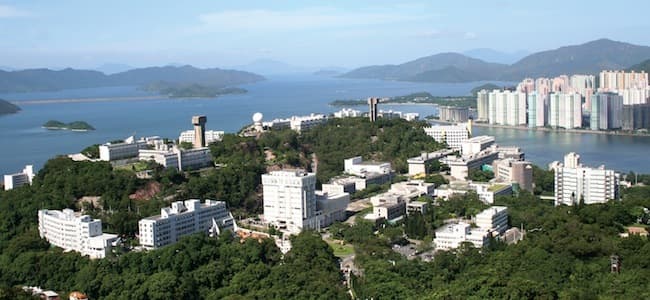
Thayer launches an undergraduate exchange program with the Chinese University of Hong Kong.
2012
Dartmouth Humanitarian Engineering students build a zero-emissions, sustainable hydroelectric generating station in Rwanda.
2013
Professor Tillman Gerngross becomes associate provost for Dartmouth's newly reconfigured Office of Entrepreneurship and Technology Transfer. He uses his experience as a serial biotech entrepreneur to smooth the way for others.
2014
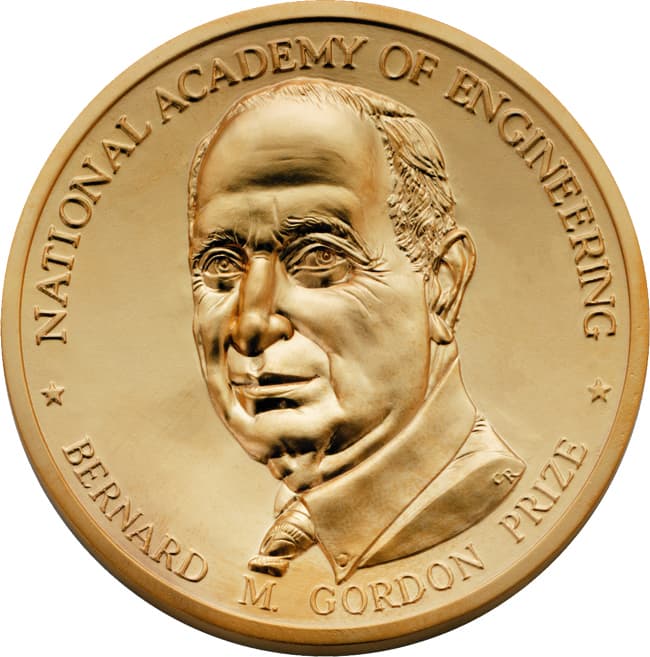
The National Academy of Engineering awards its Bernard M. Gordon Prize for Innovation in Engineering and Technology Education to Professors John Collier '72 Th'73 '75 '77, Robert Graves, Joseph Helble, and Charles Hutchinson '68A for integrating entrepreneurship into all levels of Thayer's curriculum to prepare students for technology leadership.
The Center for Surgical Innovation opens at Dartmouth-Hitchcock Medical Center under the direction of imaging expert Professor Keith Paulsen Th'84 '86. It is the nation's first such facility wholly dedicated to research.
2015
Professor Robert Dean, founder of 11 companies, is named a National Academy of Inventors Fellow. He joins Professors Eric Fossum, Tillman Gerngross, Elsa Garmire, and Axel Scherer as NAI fellows, scholars who have demonstrated a prolific spirit in creating or facilitating inventions to improve quality of life.
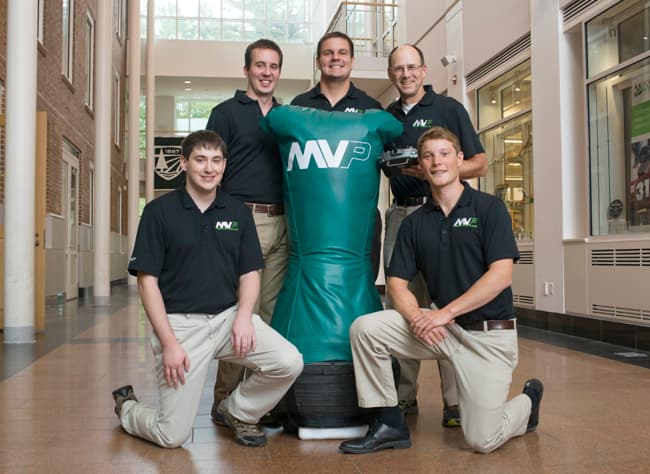
The Mobile Virtual Player (MVP), a remote-controlled robotic tackling dummy, takes the football world by storm. Invented by Noah Glennon Th’14 ’15, Andrew Smist ’13 Th’14, Elliot Kastner ’13 Th’14 ’15, and Quinn Connell ’13 Th’14 (pictured left to right with advisor John Currier ’79 Th’81) as their ENGS 89/90 project, the MVP reduces the risk of concussions during practice. Football coach and project sponsor Buddy Teevens ’79, Kastner, Connell, and Currier cofound the Mobile Virtual Player company to make the dummy available to NFL and other teams.
2016
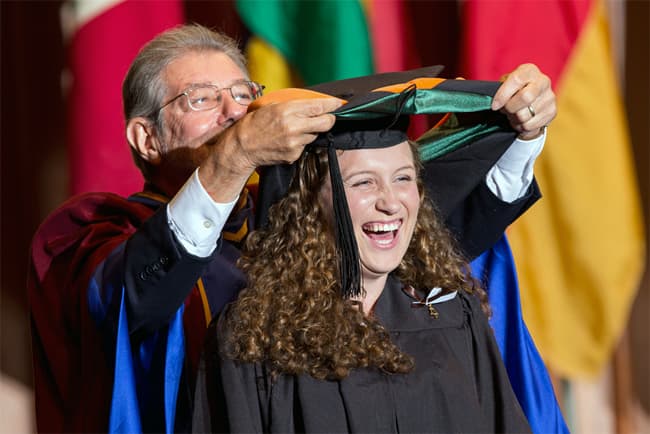
In a national first, women earn more than 50 percent of undergraduate engineering degrees.
Overseer Barry MacLean ’60 Th’61 pledges $25 million, the largest gift in Thayer’s history, to help fund an additional building and endow professorships.
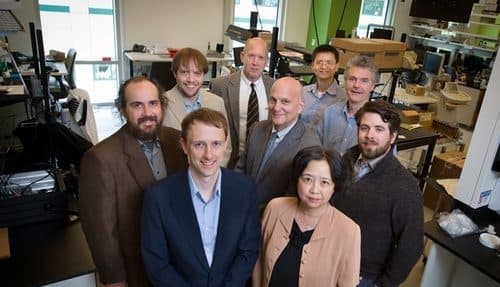
The Center for Imaging Medicine opens at the Williamson Translational Research Building at Dartmouth-Hitchcock Medical Center. Thayer School researchers work with clinicians to put new medical imaging techniques into practice.
Thayer launches an undergraduate exchange program with the Technical University of Denmark.
2017
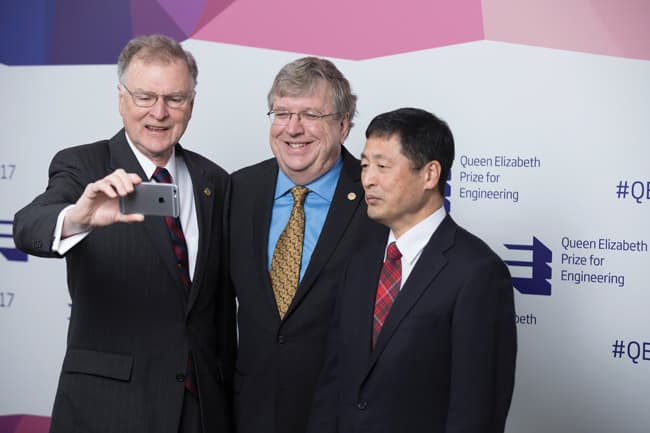
Professor Eric Fossum (center) is awarded the Queen Elizabeth Prize for Engineering, the world's highest engineering prize, for inventing the CMOS active pixel image sensor. In addition, he is dubbed the "Father of the Selfie."
Professor Tillman Gerngross is elected to the National Academy of Engineering.
2018
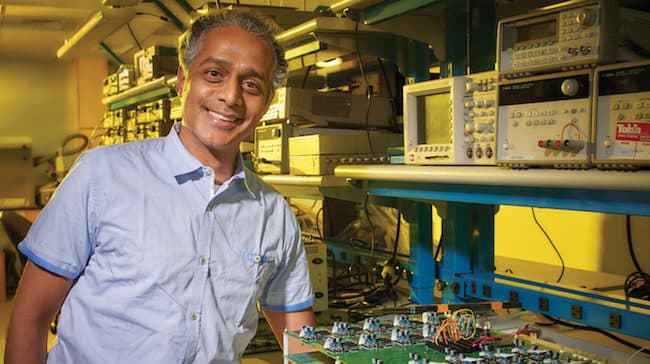
Professor Rahul Sarpeshkar, a renowned leader in the fields of medical devices and electronics as well as ultra-low power, analog, and bio-inspired design is named a fellow of the National Academy of Inventors.
2019
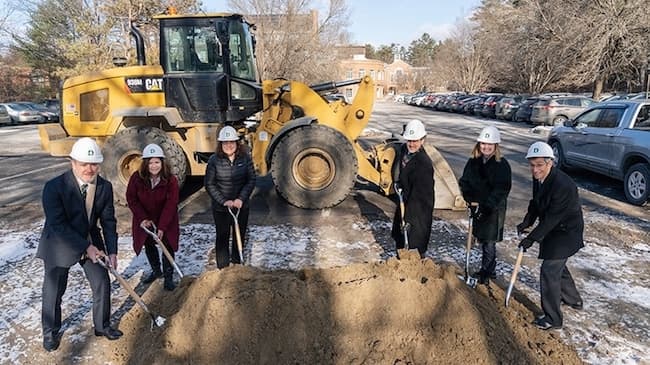
Dartmouth breaks ground on the new Engineering and Computer Science Center (ECSC) to double the footprint of Thayer's labs and classrooms and bring engineering, computer science, entrepreneurship, and design under one roof.

Alexis R. Abramson, a mechanical engineer and leader in sustainable energy technology, becomes dean.
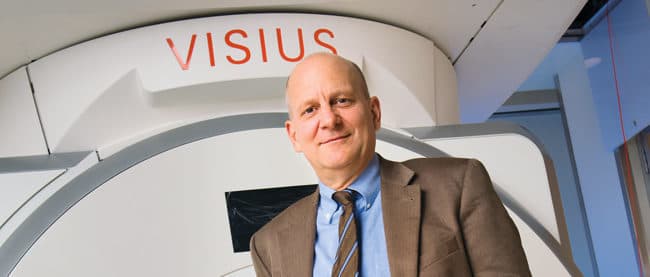
Professor Keith Paulsen, a leader medical imaging and surgical innovation, is named a National Academy of Inventors Fellow.
2020
The COVID-19 pandemic closes campus and Thayer transitions to remote learning.
2021
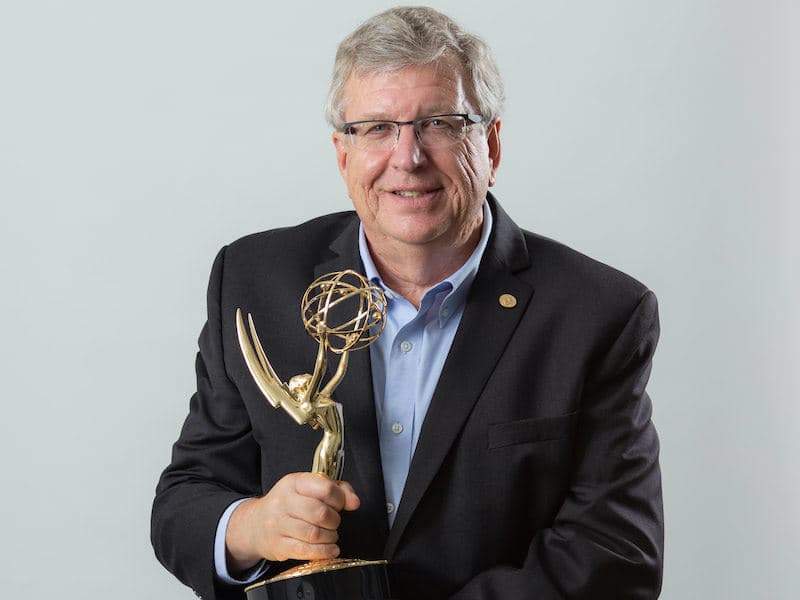
Professor Eric Fossum becomes the first Dartmouth Engineering faculty member to receive a Technology & Engineering Emmy Award for inventing the intra-pixel charge transfer CMOS image sensor.
2022
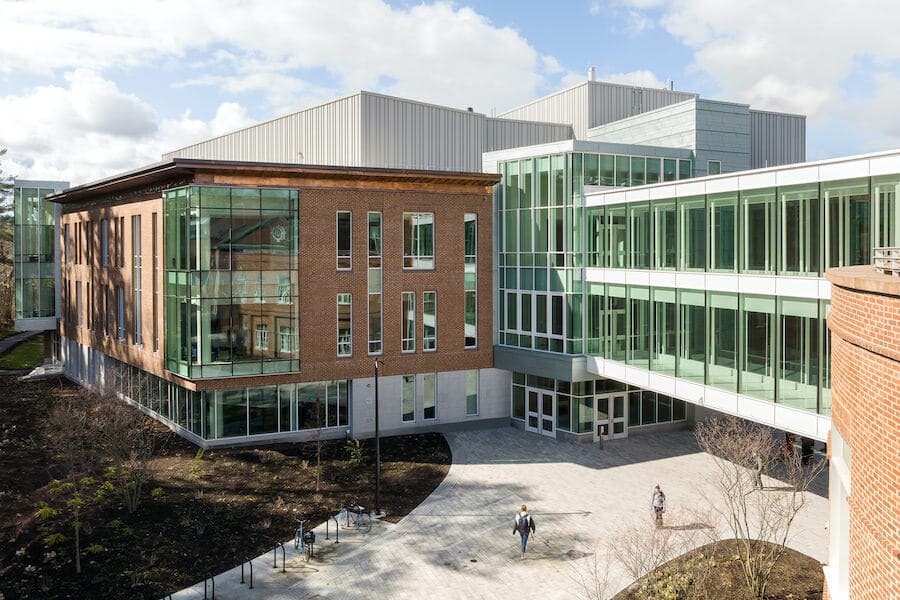
The Class of 1982 Engineering and Computer Science Center (ECSC) — the largest construction project in Dartmouth's history — opens.
